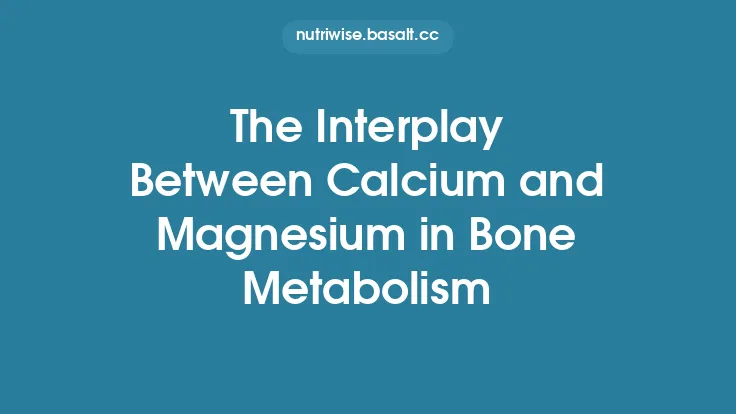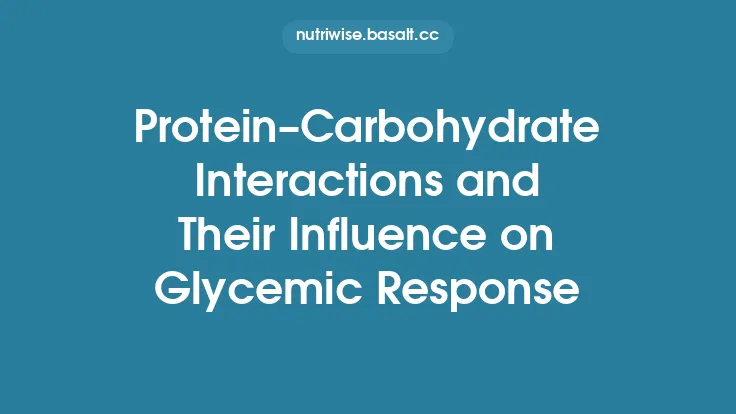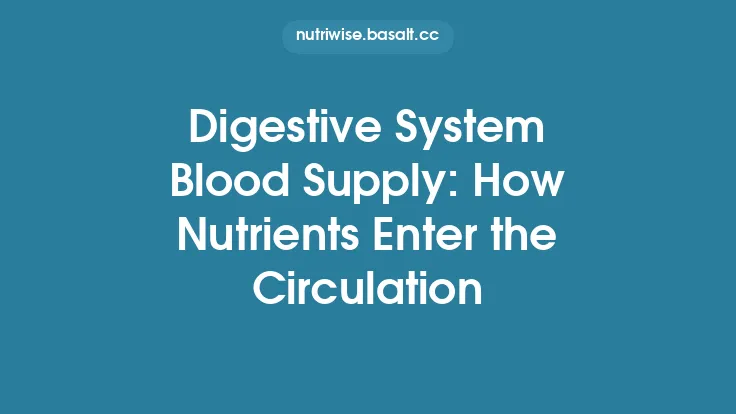Incretin hormones are a specialized group of gut‑derived peptides that act as rapid, nutrient‑sensing messengers linking the gastrointestinal tract to pancreatic islet function. Their primary physiological role is to amplify insulin secretion in direct proportion to the oral glucose load, thereby shaping the post‑prandial glucose excursion and contributing to overall glucose homeostasis. While the individual characteristics of the two classic incretins—glucose‑dependent insulinotropic polypeptide (GIP) and glucagon‑like peptide‑1 (GLP‑1)—are well documented elsewhere, the broader picture of how these hormones cooperate with each other and with parallel metabolic regulators is essential for understanding the integrated control of blood glucose. This article explores the systemic network in which incretins operate, emphasizing the mechanisms that enable their synergistic actions, the feedback loops that fine‑tune their activity, and the clinical implications of their dysregulation.
Physiological Context of Incretin Action
The enteroendocrine L‑cells and K‑cells that secrete GLP‑1 and GIP, respectively, are strategically positioned along the small intestine to detect luminal nutrients. Upon ingestion of a mixed meal, macronutrients—particularly carbohydrates and lipids—trigger depolarization of these cells via nutrient‑sensitive transporters (e.g., SGLT1 for glucose, fatty acid receptors such as GPR40/120). This leads to calcium‑mediated exocytosis of incretin granules into the portal circulation. Because the portal vein drains directly into the liver, incretin concentrations peak before systemic dilution, allowing rapid engagement of pancreatic β‑cell receptors.
Incretin release is not a binary on/off event; rather, it follows a biphasic kinetic pattern. An early, sharp rise corresponds to the arrival of nutrients in the proximal duodenum, while a sustained, lower‑amplitude phase reflects continued exposure in the distal jejunum and ileum. This temporal profile ensures that insulin secretion is matched not only to the initial glucose surge but also to the prolonged absorptive phase, preventing both early hyperglycemia and late‑phase glucose rebound.
Molecular Signaling Pathways
Both GLP‑1 and GIP act through G protein‑coupled receptors (GPCRs) that are predominantly coupled to the Gαs subunit. Activation of these receptors stimulates adenylate cyclase, raising intracellular cyclic AMP (cAMP) levels. Elevated cAMP activates protein kinase A (PKA) and the exchange protein directly activated by cAMP (Epac2), which converge on the exocytotic machinery of β‑cells to potentiate insulin granule release.
Beyond the canonical cAMP pathway, incretin receptors also engage phosphatidylinositol‑3‑kinase (PI3K)/Akt signaling, which promotes β‑cell survival and proliferation. In parallel, β‑arrestin recruitment to the receptor complex can initiate MAPK/ERK cascades, contributing to long‑term β‑cell adaptation. The relative contribution of each downstream arm varies between GLP‑1 and GIP, providing a nuanced layer of specificity that can be exploited therapeutically.
Cross‑Talk with Other Metabolic Hormones
Incretins do not act in isolation; they intersect with a constellation of hormones that collectively orchestrate glucose handling:
- Insulin: The primary effector of glucose uptake, insulin secretion is amplified by incretins in a glucose‑dependent manner, ensuring that insulin release is proportionate to the glycemic load.
- Glucagon: While GLP‑1 suppresses glucagon secretion from α‑cells, GIP can have a modest stimulatory effect. The net outcome is a reduction in hepatic glucose output during the post‑prandial period.
- Amylin: Co‑secreted with insulin, amylin slows gastric emptying and promotes satiety. Incretin‑mediated insulin release synergizes with amylin’s actions to blunt post‑prandial glucose spikes.
- Catecholamines and Cortisol: Stress hormones antagonize incretin signaling by reducing cAMP production and impairing β‑cell responsiveness, highlighting the importance of neuroendocrine context.
These interactions are mediated through shared intracellular messengers (cAMP, calcium) and through paracrine signaling within the islet microenvironment, creating a tightly regulated feedback network.
Regulation of Pancreatic β‑Cell Function
Incretin signaling exerts both acute and chronic effects on β‑cells:
- Acute Phase: Rapid cAMP elevation enhances the priming of insulin granules, increasing the readily releasable pool. This effect is glucose‑dependent, as high intracellular ATP levels close K_ATP channels, depolarizing the membrane and facilitating calcium influx.
- Chronic Phase: Sustained activation of PI3K/Akt and MAPK pathways promotes β‑cell proliferation, reduces apoptosis, and up‑regulates key transcription factors (e.g., Pdx‑1, MafA) that maintain insulin gene expression. These trophic actions are essential for preserving β‑cell mass over the lifespan.
Impact on Hepatic Glucose Production
The liver is a central hub for glucose homeostasis, balancing glycogenolysis and gluconeogenesis against glycogen synthesis. Incretins influence hepatic metabolism indirectly through:
- Insulin‑Mediated Suppression: Elevated insulin levels inhibit hepatic glucose output via Akt‑mediated phosphorylation of FOXO1, reducing transcription of gluconeogenic enzymes (PEPCK, G6Pase).
- Direct GLP‑1 Receptor Activation: Although GLP‑1 receptors are sparsely expressed in hepatocytes, low‑level activation can modulate hepatic insulin sensitivity and reduce lipogenesis, contributing to improved glucose handling.
Incretin Dynamics in the Postprandial State
The post‑prandial period is characterized by a coordinated sequence of events:
- Nutrient Sensing → Incretin release.
- Incretin‑Mediated Insulin Secretion → Enhanced peripheral glucose uptake (muscle, adipose).
- Glucagon Suppression → Decreased hepatic glucose output.
- Gastric Emptying Modulation (primarily GLP‑1) → Slower nutrient delivery, flattening glucose peaks.
- Satiety Signaling → Reduced subsequent caloric intake.
Disruption at any node—whether due to impaired nutrient sensing, receptor desensitization, or downstream signaling defects—can lead to exaggerated glucose excursions and contribute to the development of dysglycemia.
Pathophysiological Alterations in Diabetes
In type 2 diabetes mellitus (T2DM), several defects converge to blunt the incretin effect:
- Reduced GIP Receptor Expression on β‑cells, rendering GIP less effective.
- Impaired GLP‑1 Secretion due to L‑cell dysfunction, often linked to chronic low‑grade inflammation.
- Receptor Desensitization caused by persistent hyperglycemia and elevated free fatty acids, which promote β‑arrestin‑mediated internalization.
- Altered Downstream Signaling: Diminished cAMP generation and Akt activation compromise both acute insulin release and β‑cell survival.
These changes diminish the capacity of the gut‑pancreas axis to compensate for insulin resistance, reinforcing hyperglycemia and accelerating β‑cell failure.
Therapeutic Exploitation of Incretin Pathways
The clinical success of incretin‑based therapies underscores the translational relevance of this hormonal axis:
- GLP‑1 Receptor Agonists (e.g., exenatide, liraglutide) mimic native GLP‑1, providing sustained receptor activation, delayed gastric emptying, and weight loss.
- Dipeptidyl Peptidase‑4 (DPP‑4) Inhibitors (e.g., sitagliptin, saxagliptin) prolong the half‑life of endogenous incretins by preventing their enzymatic degradation.
- Dual GIP/GLP‑1 Co‑Agonists (e.g., tirzepatide) aim to harness the complementary actions of both hormones, achieving superior glycemic control and weight reduction.
Understanding the precise molecular interplay among incretins, their receptors, and downstream effectors informs the design of next‑generation agents that can fine‑tune each component of the glucose regulatory network.
Future Directions and Research Gaps
Despite extensive progress, several unanswered questions remain:
- Cellular Heterogeneity of Incretin Secretion: Single‑cell transcriptomics suggest subpopulations of L‑cells with distinct nutrient sensitivities; delineating these subsets could enable targeted modulation.
- Gut Microbiome Influence: Microbial metabolites (e.g., short‑chain fatty acids) appear to affect incretin release, but causal pathways are not fully mapped.
- Central Nervous System Integration: Incretins cross the blood‑brain barrier and act on hypothalamic nuclei; the extent to which central signaling contributes to peripheral glucose homeostasis warrants deeper investigation.
- Long‑Term β‑Cell Plasticity: While incretin signaling promotes β‑cell proliferation, the durability of newly formed β‑cells and their functional equivalence to native cells remain under study.
Addressing these gaps will refine our comprehension of the incretin system and may reveal novel therapeutic windows.
Concluding Perspective
The interplay between incretin hormones and blood glucose homeostasis exemplifies a sophisticated endocrine feedback loop that translates the act of eating into precise metabolic outcomes. By integrating rapid nutrient sensing, coordinated hormone release, and multi‑organ signaling, incretins ensure that insulin secretion, hepatic glucose production, and peripheral glucose uptake are harmonized to maintain euglycemia. Disruption of any component of this network contributes to the pathogenesis of diabetes, while pharmacologic reinforcement of incretin pathways offers powerful tools for disease management. Continued research into the nuanced mechanisms governing incretin dynamics promises to deepen our understanding of metabolic regulation and to inspire innovative strategies for preserving glucose balance throughout the lifespan.





